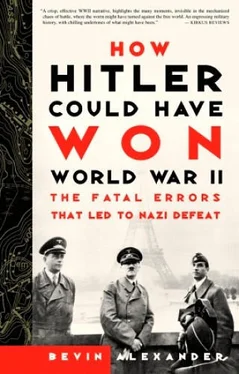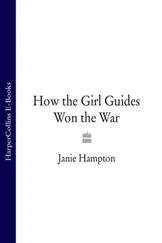Since the start of World War II and the unveiling of blitzkrieg with tanks and dive-bombers, the offensive had dominated the defensive. This period was now coming to a close. The inherent superiority of the defense over the offense was being reasserted. It had marked World War I and had been brought on by the great power of defensive weapons like field fortifications, artillery, and the machine gun.
The enormous offensive battles that burst upon the world in Russia in the summer and fall of 1941 obscured this point for a time. But the Tobruk battles and Operation Brevity foreshadowed what Battleaxe now demonstrated: when resolute troops held strong defensive positions, and possessed weapons that could immobilize tanks, they could prevail. This lesson, learned in the trenches of the western front 1914–1918, was going to be relearned on the battlefields of the Second World War.
As the giant caldron battles of Barbarossa slowly played out in the Soviet Union in the fall of 1941, the British prepared for their first major offensive against Rommel in North Africa.
Winston Churchill had been agitating for such an attack for months, and poured as many troops and as much equipment as he could find into Egypt. Four days after the end of Battleaxe, he relieved General Wavell and replaced him with General Sir Claude Auchinleck, commander in India, and immediately began pressing him to mount a major effort to wrest Libya from the Axis.
The campaign that opened on November 18, 1941, code-named Operation Crusader, developed into the most spectacular tank battle in history, a battle fought at extreme speed over a desert that allowed almost complete freedom of movement.
However, Crusader is notable because Auchinleck started with a false concept—he sought to destroy the enemy’s forces—and also dispersed his armor so widely that he never achieved decisive strength at any point. The result was that Rommel, though vastly outnumbered in tanks and other weapons, was able to block the British and turn what appeared to be certain defeat into almost a victory.
Armored forces are so fluid they are unsuited to be an objective. They usually can be destroyed only by indirect means. The British could have done this by throwing a strategic barrage or barrier across the Axis line of supply, requiring Rommel to commit his panzers to reopen the line under conditions favorable to the British.
Such a choke point existed: Acroma, on the Axis supply route twenty miles west of Tobruk. A concentrated attack on Acroma would have relieved the siege of Tobruk without a fight and forced Rommel to attack the barrier frontally or retreat for lack of fuel and supplies. Yet the British never aimed at Acroma or any other strategic point astride the Axis supply line. Instead, they crashed against Rommel’s gun-lined traps in direct, costly assaults that, moreover, were delivered by numerous individual units, and never by massed armor.
Consequently Rommel repeatedly caught British armor dispersed. As he remarked to a captured British officer after the battle: “What difference does it make if you have two tanks to my one, when you spread them out and let me smash them in detail?”
The British desert force had been renamed 8th Army, placed under the command of Lieutenant General Sir Alan Cunningham, and divided into two corps: the 13th under Lieutenant General A. R. Godwin-Austen with the 2nd New Zealand and 4th Indian Divisions and a force of infantry or “I” tanks; and the 30th under Lieutenant General C. W. M. Norrie with the “Desert Rats” of the 7th Armored Division (7th and 22nd Armored Brigades, plus an infantry and artillery Support Group), 4th Armored Brigade, 22nd Guards Brigade, and 1st South African Division. In reserve was the 2nd South African Division.
The British plan was for 13th Corps to pin down Axis troops holding the frontier from Sollum and Halfaya Pass to Sidi Omar, twenty-five miles inland, while the 30th Corps swept around south of Sidi Omar, destroyed Rommel’s armor, then linked up with the Tobruk garrison, seventy miles beyond the frontier.
British perversity in splitting armor is shown in the fact that the three armored brigades of 30th Corps aimed from the outset at divergent objectives—although Auchinleck and Cunningham had identified the Sidi Rezegh airfield, atop an escarpment only twelve miles southeast of the Tobruk defensive perimeter, as their principal target. If the airfield could be seized, tanks there and tanks from Tobruk could open a link, relieve the siege, and endanger the Axis position.
On the night of November 18, 1941, 30th Corps swept around Rommel’s desert flank, without encountering any resistance. The next day Cunningham sent two of three regiments of the 7th Armored Brigade to capture Sidi Rezegh airfield. The third regiment and the division’s Support Group did not come up until the following morning, November 20. By then Rommel had rushed up part of 90th Light Division and a large number of antitank guns to block the advance.
Meanwhile, the other two British armored brigades drove off to widely separated places, and promptly ran into trouble. The 22nd, newly arrived from England, encountered the dug-in guns of Trieste Armored Division at Bir el Gubi, twenty-two miles south of Sidi Rezegh. Without waiting to call for assistance, the brigade launched a “charge of the Light Brigade” against the Italian guns, losing forty of 160 tanks within minutes, and completely bogging down.
The 4th Armored Brigade stopped at Gabr Selah, thirty miles southeast of Sidi Rezegh. The reason was to keep in touch with the left or southern flank of 13th Corps, although this could have been done by radio. One of the brigade’s three regiments rushed off twenty-five miles in pursuit of a German reconnaissance unit and was lost for the day. Rommel sent 21st Panzer Division’s tank regiment, plus twelve field guns and four 88s, against the two remaining regiments of 4th Brigade, and destroyed twenty-three Stuart tanks against a loss of three German tanks.
The Germans, too, made a serious error. General Ludwig Cruewell, commanding Africa Corps, led all of his armor on a wild-goose chase toward Fort Capuzzo on the morning of November 20, after receiving a false report that a British advance was coming from that direction.
Although General Cunningham was informed of Africa Corps’s departure—which opened up a giant hole in the Axis position—he took no advantage of the bonanza. He should have concentrated his armor, driven straight for the Sidi Rezegh airfield, and relieved Tobruk. This would have fatally compromised the entire Axis position. Instead he did nothing, giving the Germans a chance to retrieve Cruewell’s blunder.
Although 21st Panzer Division ran out of gasoline near Sidi Omar, and didn’t get refueled until after nightfall, 15th Panzer Division swept back southwest, and, in the afternoon, struck 4th Brigade, still sitting at Gabr Saleh, and inflicted more heavy damage on it. Cunningham ordered the 22nd Armored Brigade to assist, but it didn’t complete the twenty-eight-mile trek from Bir el Gubi until after the battle had ended. However, the “I” tank brigade of 13th Corps was only seven miles to the east of 4th Brigade, and eager to advance. But, because it had “infantry” tanks, Cunningham did not call on it.
Rommel was exasperated by Cruewell’s rush off to Fort Capuzzo, but, since 8th Army was not advancing into the void, he saw that 7th Armored Brigade and Support Group at Sidi Rezegh airfield were in a dangerous position. They were stopped from advancing on the Tobruk defenses by 90th Light, while Cunningham had done nothing to protect their rear. Accordingly, Rommel ordered Africa Corps to advance on the tail of the force the next morning, November 21, in hopes of destroying it.
General Norrie, commander of 30th Corps, had his eyes focused on Tobruk, not on his backside. He was planning to advance toward Tobruk on the morning of November 21 with 7th Tank Brigade and Support Group, in conjunction with a tank-led sortie coming out of Tobruk.
Читать дальше


![Джонатан Димблби - Barbarossa - How Hitler Lost the War [calibre]](/books/385421/dzhonatan-dimblbi-barbarossa-how-hitler-lost-the-w-thumb.webp)









